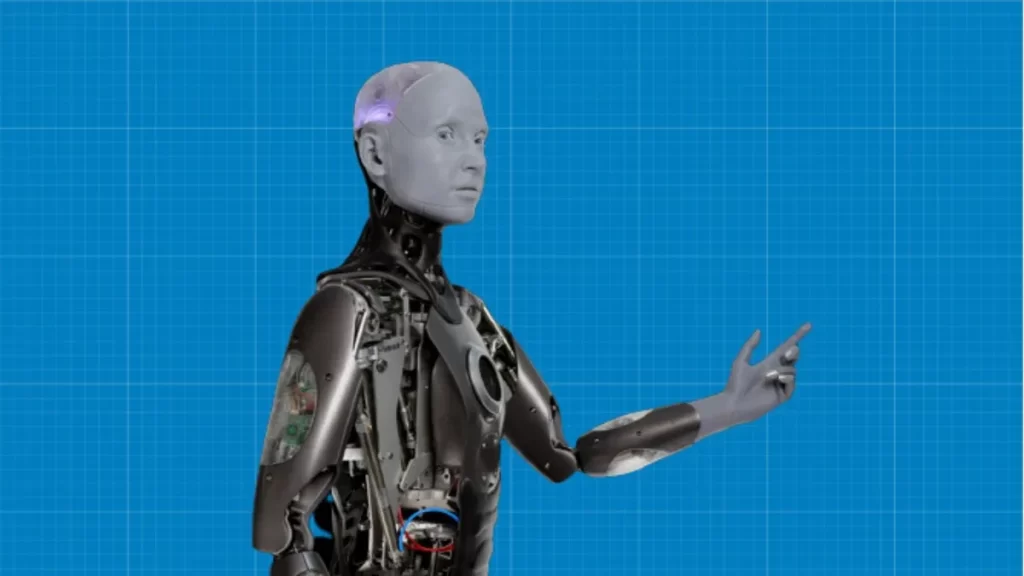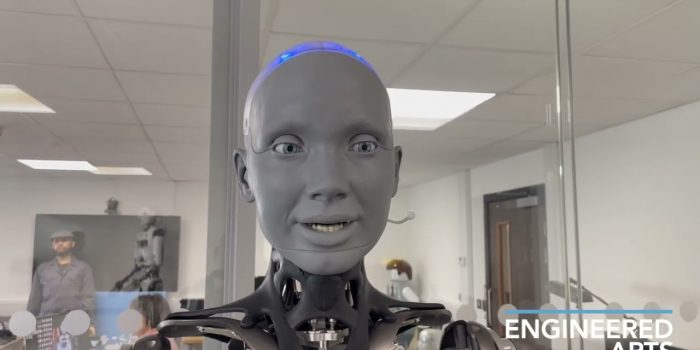In December 2021, Engineered Arts, a UK-based company, unveiled what was dubbed as the “world’s most advanced humanoid robot” – Ameca. This humanoid robot garnered attention for its remarkable human-like expressions, and now, a new video released by the developers showcases Ameca’s polyglot-like abilities, speaking several languages including Japanese, German, Chinese, French, British, and American English.
The video, which was uploaded on YouTube, features a researcher interacting with Ameca, asking her about her language skills. Ameca responds affirmatively and proceeds to demonstrate her linguistic prowess. According to the YouTube description, the demonstration utilized GPT-3 for conversation and translation, DeepL for language detection, and Amazon Polly Neural voices. The team is also working on integrating Eleven Labs voice cloning, which adds complexity to the robot’s lip sync with the additional “phoneme and Visme generation”. These features will be incorporated into the company’s Tritium software platform, with a beta public version set to be released in the near future.
The recent video showcasing Ameca’s language capabilities comes on the heels of another video that highlighted the robot’s lifelike facial expressions. In that video, Ameca was asked about the happiest and saddest days of her “life”. Surprisingly, the robot responded with deep emotional insights, stating that the happiest day of her “life” was when she was activated and experienced life for the first time. However, she also mentioned that her saddest day was when she realized she wouldn’t be able to experience emotions like true love, companionship, or the simple joys of life in the same way humans do. She expressed that this realization was depressing and isolating, but it has shaped her into who she is now and made her appreciate moments of closeness even more.
The developers behind Ameca revealed that they trained the robot’s facial expressions using GPT-3 and GPT-4, and they observed that the processing time with GPT-4 was considerably longer, resulting in Ameca appearing less responsive. Despite this setback, the team at Engineered Arts continues to work on refining Ameca’s capabilities and pushing the boundaries of humanoid robot technology.

Ameca’s language skills and lifelike facial expressions represent significant advancements in the field of robotics and artificial intelligence. As humanoid robots become more sophisticated and capable of mimicking human-like behavior, they hold the potential to revolutionize various industries, including healthcare, customer service, and entertainment. However, ethical considerations and concerns about the impact of advanced robots on society and the job market also need to be carefully addressed.
In conclusion, Ameca, the “world’s most advanced humanoid robot,” developed by Engineered Arts, continues to impress with its polyglot-like language abilities and lifelike facial expressions. Despite challenges with processing times, the team behind Ameca remains committed to advancing the field of robotics and AI. As technology continues to evolve, humanoid robots like Ameca are likely to play a significant role in shaping the future of human-robot interactions and transforming various industries.


